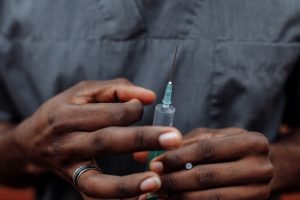Over 40 years into the HIV/AIDS pandemic, we now have a new way to deliver medication to treat and prevent the disease. In January 2021, the United States Food and Drug Administration (FDA) approved the very first long-acting injectable medication (LAI for short) for treating HIV. In December of that same year, the FDA approved an LAI for pre-exposure prophylaxis (or PrEP) to prevent HIV infection. Extensive clinical trials found these LAIs to be safe, effective, and rare to fail.
LAI medications give patients additional options for HIV treatment and prevention that align with their personal preferences, lifestyles, and living situations. The additional options will, In theory, enable more people to accept and take them. Increasing adherence will decrease infection. The pandemic will, at last, end. That is the future my colleagues and I are actively working toward.
But in practice, LAI medications are entering an HIV treatment and prevention environment where benefits of existing medications have not been spread evenly among Americans. Treatment and prevention outcomes differ by age, by race/ethnicity, and by sexual and gender identities. Individuals facing housing instability, poverty, criminal justice involvement, HIV-related stigma, intimate partner violence, mental illness, and substance use disorders all fare worse than those who do not.
In 2020, Black Americans were 42% of people living with HIV despite being 13.6% of the population. Another 27% of Americans with HIV were Latino/a, despite making up 18.9% of the population.1 On the prevention side, just 23% of people who could benefit from PrEP were prescribed PrEP in 2019. Over 63% of White Americans who could benefit were taking PrEP compared to just 14.0% Hispanic/Latino Americans and 8.2% of Black Americans.
As we get these medications into communities who most need them, we must ask a larger question about how health care is provided in America. People living with and at risk of HIV have to gain from these medications. But we should also ask, what do they have to lose?
For one, money. LAIs are new to HIV, but they have been long used to treat substance use disorder and mental illness. Injectable medications are expensive. Even though they save health systems money by preventing illness down the line, the upfront costs are high. What we have seen in other contexts is that insurance companies will make every effort to shift costs back onto both patients and the providers who care for them. Many clinics in Los Angeles are part of programs that cover these costs, but the same is not true in many parts of the country.
Second is the question of time. LAIs replace the need to take pills every day but, unlike a pill, LAIs for HIV cannot be administered by patients themselves. Patients must take the time to travel to a provider for the injection. Access to injections must be made easier, with more clinics and pharmacies made available in both urban and rural areas.
The health care system asks for trust – trust that a new medication will work as advertised and not contain hidden costs, financial or otherwise. But has trust been earned? There is no shortage of examples where the health care system has failed to earn that trust. Medical mistrust is rooted in historical and current experiences of racism, homophobia, and stigma. It is a rational response to engaging with biased systems of care that are embedded with those same prejudices.
It is critical to not only develop medications for complex diseases but also build infrastructure capable of delivering them to those who need them and engage communities most affected by the disease. It is also important to foster providers sense of caring and respect to earn patients’ trust.
Many patients who need these medications have had their freedoms taken away. Factors that contribute to increased HIV risk greatly overlap with increased risk for incarceration. While many people with HIV get care in clinics and doctor’s offices, many others get it in jails and prisons. Access to healthcare behind bars is a constitutionally protected right. But that care does not always meet the highest standards and oversight can be lacking. The availability of LAIs on release from custody may help patients while they reestablish their lives the community. Patients should be encouraged to use LAIs. They should never be coerced into using them.
The meeting of the health care system, patients, and their communities must be just. Justice includes ensuring that everyone who might benefit from LAIs can access them. The barriers I described above do not affect all patients equally, and if not addressed, will make health outcomes more unequal. None of the barriers are new – we have seen them before and know how they might be overcome. Otherwise, the promise of long-acting injectable medications for HIV treatment and prevention will remain just that: a promise but a promise unfulfilled.
Gabriel Edwards, MD, MPH, is an associate project scientist at the David Geffen School of Medicine, UCLA Division of General Internal Medicine & Health Services Research.




